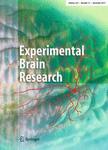版权所有:内蒙古大学图书馆 技术提供:维普资讯• 智图
内蒙古自治区呼和浩特市赛罕区大学西街235号 邮编: 010021

作者机构:KRUG Life Sci Neurosci Lab Houston TX USA
出 版 物:《EXPERIMENTAL BRAIN RESEARCH》 (实验脑研究)
年 卷 期:1998年第121卷第1期
页 面:51-58页
核心收录:
学科分类:0710[理学-生物学] 1001[医学-基础医学(可授医学、理学学位)] 07[理学] 09[农学]
基 金:Office of Life and Microgravity Sciences and Applications Life Sciences Division National Aeronautics and Space Administration, NASA, (199-16-11-54)
主 题:spatial coding saccades tilt perception adaption human
摘 要:This purpose of this study was to examine the spatial coding of eye movements during static roll tilt (up to +/-45 degrees) relative to perceived earth and head orientations. Binocular videographic recordings obtained in darkness from eight subjects allowed us to quantify the mean deviations in gaze trajectories along both horizontal and vertical coordinates relative to the true earth and head orientations. We found that both variability and curvature of gaze trajectories increased with roll tilt. The trajectories of eye movements made along the perceived earth-horizontal (PEH) were more accurate than movements along the perceived head-horizontal (PHH). The trajectories of both PEH and PHH saccades tended to deviate in the same direction as the head tilt. The deviations in gaze trajectories along the perceived earth-vertical (PEV) and perceived head-vertical (PHV) were both similar to the PHH orientation, except that saccades along the PEV deviated in the opposite direction relative to the head tilt. The magnitude of deviations along the PEV, PHH, and Pi-IV corresponded to perceptual overestimations of roll tilt obtained from verbal reports. Both PEV gaze trajectories and perceptual estimates of tilt orientation were different following clockwise rather than counterclockwise tilt rotation;however, the PEH gaze trajectories were less affected by the direction of tilt rotation. Our results suggest that errors in gaze trajectories along PEV and perceived head orientations increase during roll tilt in a similar way to perceptual errors of tilt orientation. Although PEH and PEV gaze trajectories became nonorthogonal during roll tilt, we conclude that the spatial coding of eye movements during roll tilt is overall more accurate for the perceived earth reference frame than for the perceived head reference frame.